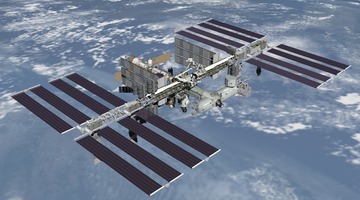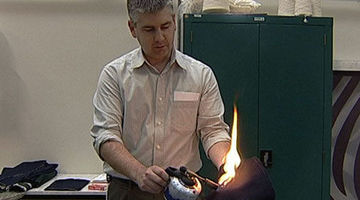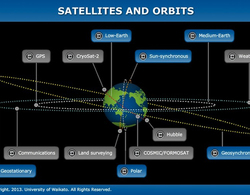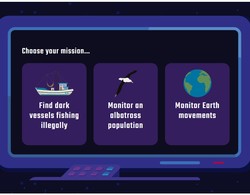

Since the global positioning system (GPS) became fully operational in the mid-1990s, it’s widely used to navigate, map and survey land as well as study the small changes in movement of objects on ...
READ MORE

A satellite is anything that orbits around another object. Moons are natural satellites that orbit around planets, whereas artificial satellites are objects that people have made and launched ...
READ MORE

This article explores Pacific migration and offers scientific and technological explanations for a thousand year gap between settlements in West Polynesia and East Polynesia. Rights: Crown 2019 ...
READ MORE

Plant reproduction is a topic that lends itself to many areas within the junior and middle school curriculum. This teacher resource provides a number of literacy and numeracy links to New Zealand ...
READ MORE

Do you think that the space industry is limited to astronauts and billionaires? If so, you need to think again! You can have so many careers in aerospace. If you look at what most astronauts do ...
READ MORE

In this activity, students answer a short multichoice survey to identify and address common alternative conceptions about fossil fuels. By the end of this activity, students should be able to ...
READ MORE

This citizen science project wants your assistance to extract information from various climate scientific graphics to help combat misinformation and support scientific communication. Using this ...
READ MORE

In this online PD session recorded on 15 October 2015, primary school teacher Kim MacPherson talks about the Science Learning Hub’s resources – Conserving native birds – and how she used a ...
READ MORE

Active reading is an important activity for making meaning during the process of science inquiry (Osborne, 2010). The integration of science and literacy can enhance student learning in both ...
READ MORE

In this unit, students will consider the performance properties of new stab and flame-resistant fabric and design protective wear for new market opportunities. Purpose To investigate the ...
READ MORE
Dr Allan McInnes and Dr Adrian McDonald, from the University of Canterbury, explain how gravity and projectile motion keep natural and artificial satellites in an orbital path.
READ MORE
Dr Moritz Lehmann is a freshwater scientist specialising in lake water quality and remote sensing. He uses data from Earth observation satellites to gain more information about cyanobacteria ...
READ MORE
Earth observation satellites are very useful for taking images of things – for example, lakes, ice sheets or penguin colonies – on a regular basis. Satellite images are taken hundreds of ...
READ MORE

The size, orbit and design of a satellite depend on its purpose. In this interactive, scientists discuss the functions of various satellites and orbits. Accompanying fact files provide ...
READ MORE

Choose a mission and then successfully build and launch a satellite that can help gather the data required. Select here for additional information on using this interactive simulation.
READ MORE

This slideshow, from the webinar Fostering literacy through primary science classroom, provides additional support for the video tutorial. Use the Slideshow menu for further options, including ...
READ MORE